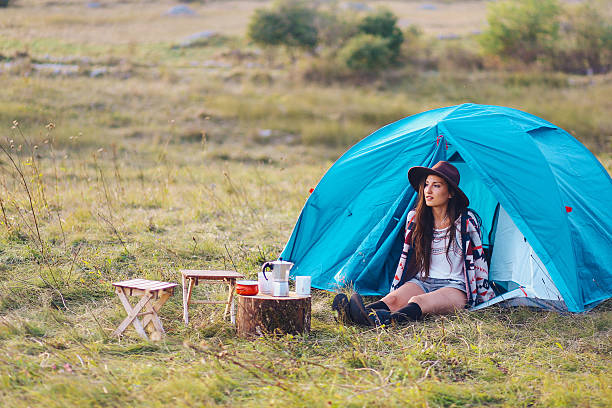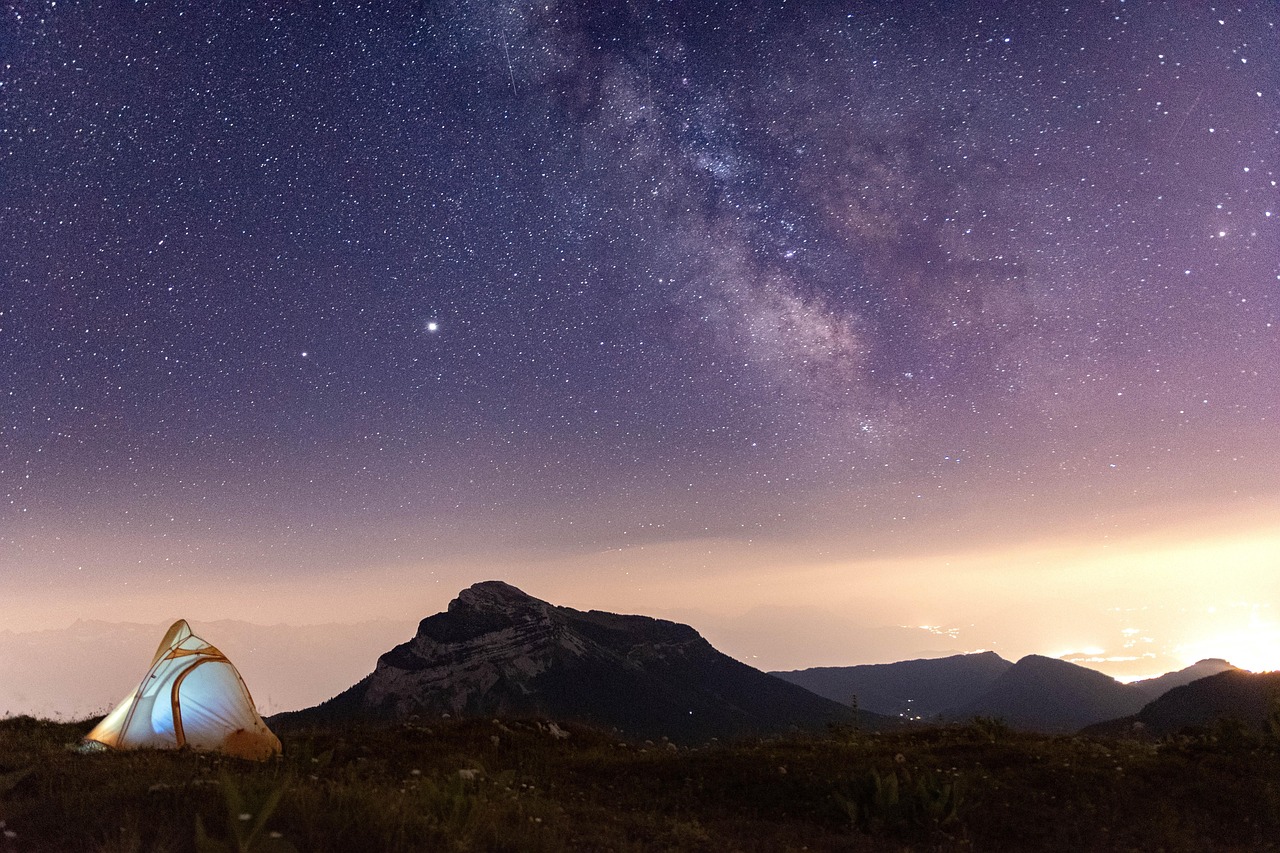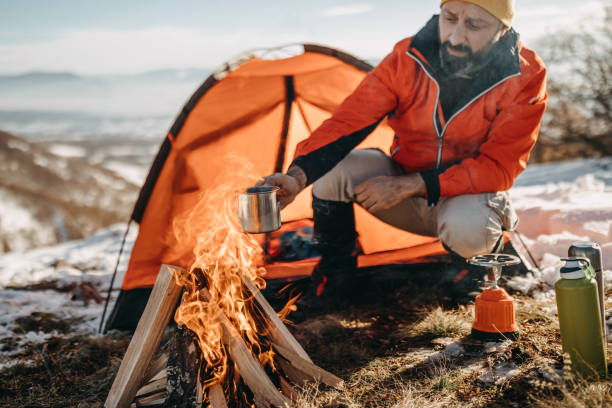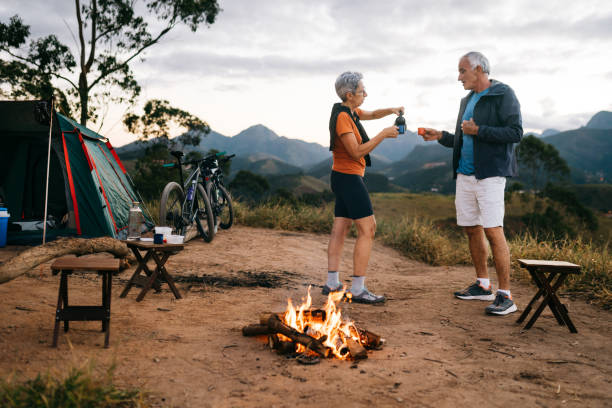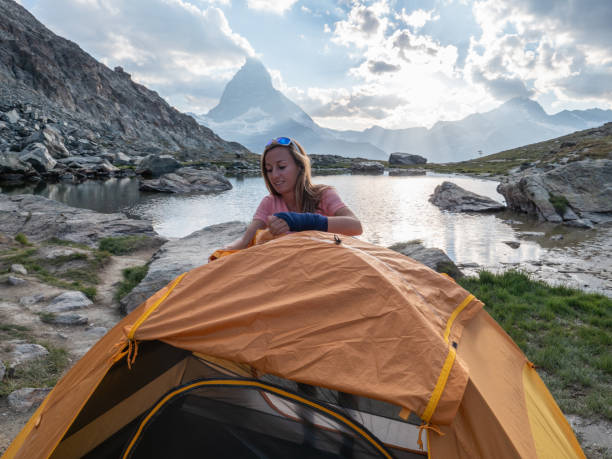If you’ve ever found yourself pitching a tent under stormy skies or waking up to frost clinging to the rainfly, you already know that not all camping tents are created equal—especially when the seasons change. We’ve been there: caught in surprise snow flurries in spring, battling summer heat in open desert, hunkering down during fall downpours, and enduring biting winds on winter hikes. That’s why we decided to put some of the most talked-about four-season (and strong three-season) nylon tents to the test—real trips, real weather, real talk.
Over the past year, my partner and I set out with seven different tents, trekking across rugged terrain, dense forests, alpine meadows, and everything in between. These weren’t showroom tests. We were out there in the wild—setting up in the dark, waiting out storms, and sipping hot coffee under awning vestibules while rain danced on the fly. Each of these nylon tents came with its own vibe and purpose, and some surprised us in the best ways. Whether you’re planning your first winter hike or your next all-season road trip, here are our top picks on nylon camping tents, the best camping tents for all seasons.
Table of Contents
- MSR Hubba Backpacking Tent
- Big Agnes Backpacking Tent
- Naturehike Star River Tent
- Night Cat Ultralight Tent
- MC TOMOUNT Tent
- BISINNA Backpacking Tent
- Wakeman Camping Tent
- Our Verdict!
- How to Choose the Best Nylon Tents for Camping
- Ripstop Nylon Construction
- Weight-to-Strength Ratio
- Waterproof Coating (PU or Silicone)
- Is nylon good for tents?
- How to waterproof a nylon tent?
- How do you heat a nylon tent?
7
MSR Hubba Backpacking Tent
Best Stability. One of our earliest test runs was in late spring, deep in the Appalachians. The MSR Hubba Backpacking Tent became our home for three nights, and despite the moody mountain weather, it held its own like a champ.
First off, the interior space blew us away—29 square feet of floor area that actually felt bigger thanks to the smart pole design and vertical sidewalls. Unlike tapered tents that make you feel like you’re sliding into a mummy bag, the rectangular floorplan gave us true side-by-side comfort. My wife and I both stretched out fully, with no awkward feet-to-face situation.
We especially appreciated the dual vestibules—each with 8.75 square feet—because let’s be real, crawling over your partner for a late-night bathroom break is no one’s idea of romance. The cross-ventilated rainfly was a godsend during one humid night when condensation was trying its best to sneak in. We cracked open the kickstand vents, and the air just flowed through, keeping things dry without turning the tent into a wind tunnel.
Setup was crazy easy. Even the first time out, we got it fully pitched in about 7 minutes. The color-coded clips and unified pole system are genius, especially when it’s getting dark and you’re fumbling for gear.
My only gripe? The nylon tent fabric and floor felt thin. We shelled out for the optional footprint and I’d say that’s mandatory if you want this beauty to last.
You might also be interested in the Best Rooftop Tents for overlanding and car camping!
Pros:
✅ Ultra-lightweight yet durable build
✅ Excellent ventilation with mesh canopy
✅ Packs down compactly for easy travel
Cons:
❌ Expensive for budget-conscious campers
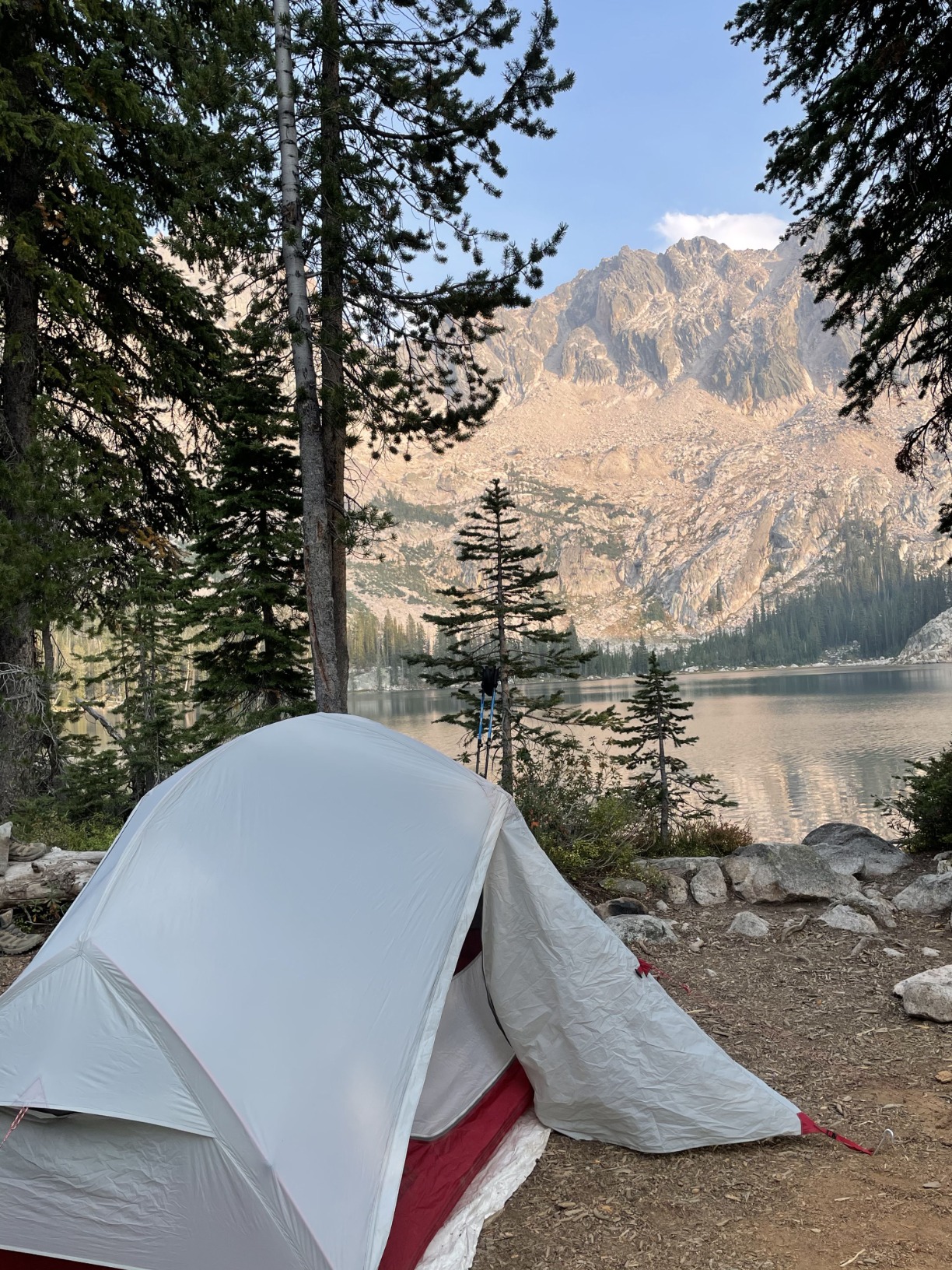
6
Big Agnes Backpacking Tent
Our trip to Colorado’s high country—11,000 feet above sea level—was no joke. Winds howled at 60 mph, rain turned to sleet, and the Big Agnes Backpacking Tent held steady through it all. This tent was the fortress we didn’t know we needed.
Despite looking light and sleek, the Big Agnes proved its mettle. The high-volume pole design creates steeper walls and surprisingly generous headroom, especially for a backpacking tent. We felt like we were in a miniature cabin more than a nylon dome. It’s got one vestibule and one door, but that vestibule is protected by storm flaps, which came in handy during the downpour.
We loved the two-tone mesh—just enough privacy, but when the skies cleared, we could gaze up at the stars from inside. The quick stash door was a small but brilliant feature too. You can just tuck the door flap away when it’s unzipped instead of wrestling it in the wind.
During the storm, not a single drop came through. Our dogs were with us on this trip (two 60-pounders), and somehow, we all fit—two adults, two teens, and the pups. Space-wise, it was tight but totally manageable, and we weren’t on top of each other.
One warning: if you or your camping partner is really tall—like over 6’8”—you might feel a bit cramped. But for everyone else, this tent’s a winner.
Check out the original website of the brand for more interesting options.
Pros:
✅ Roomy interior with steep walls
✅ Premium materials and weather protection
✅ Fast and easy setup with color-coded poles
Cons:
❌ Vestibule space is a bit limited
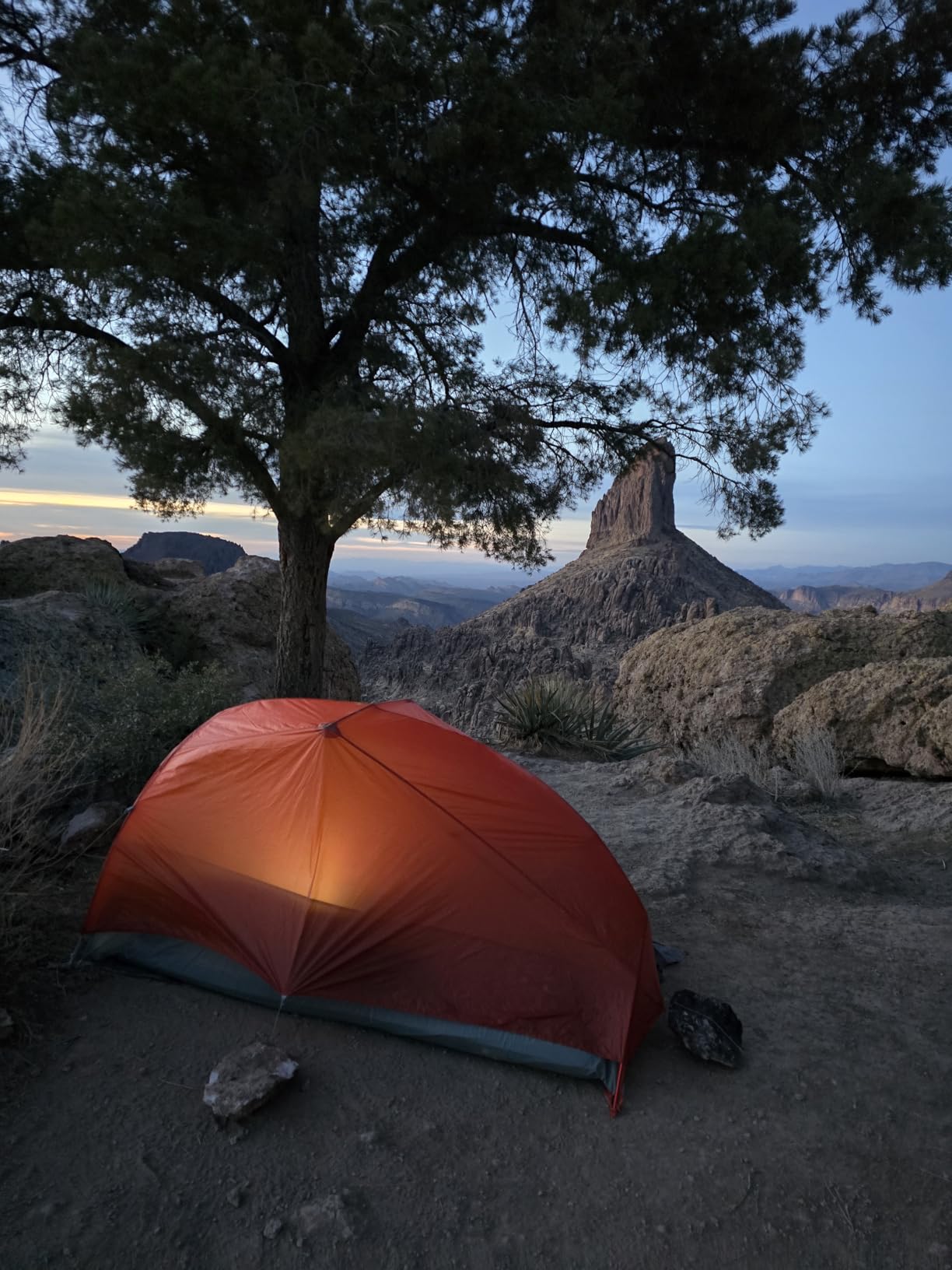
5
Naturehike Star River Tent
This one came with us on a mid-summer bikepacking trip along the Oregon coast. We were trying to pack light, and the Naturehike Star River Tent was the perfect match—compact, clever, and super functional.
At just over 4 pounds, it didn’t weigh us down, and we loved how each component had its own stuff sack. That made it super easy to split the load—my partner took the fly, I carried the poles and body. Setup was a breeze thanks to the color-coded poles and grommets, and the two-way zippers meant we could open the tent wide on both sides for airflow or views.
The vertical ends and rectangular shape gave us a roomier feel inside. We had space to sleep and stash gear, and there were long mesh pockets at both the head and foot—ideal for phones, chargers, and headlamps. Oh, and there’s this slick little gear tray that hooks inside the vestibule for keeping stuff off the ground.
We had one morning where the drizzle just wouldn’t quit. That’s where the awning-style vestibules saved the day. We propped them open for extra shade and cooked breakfast under shelter without getting wet. While this isn’t a full-blown winter tent, it held up admirably in wind and rain.
Bottom line: lightweight, versatile, and full of thoughtful design details. A real sleeper hit.
Watch this detailed review of the product by Escape Outdoors on YouTube!
Pros:
✅ Nylon tent material has insulation and rain protection
✅ Lightweight and highly portable
✅ Freestanding with strong aluminum poles
Cons:
❌ Not ideal for extreme cold or high-altitude use
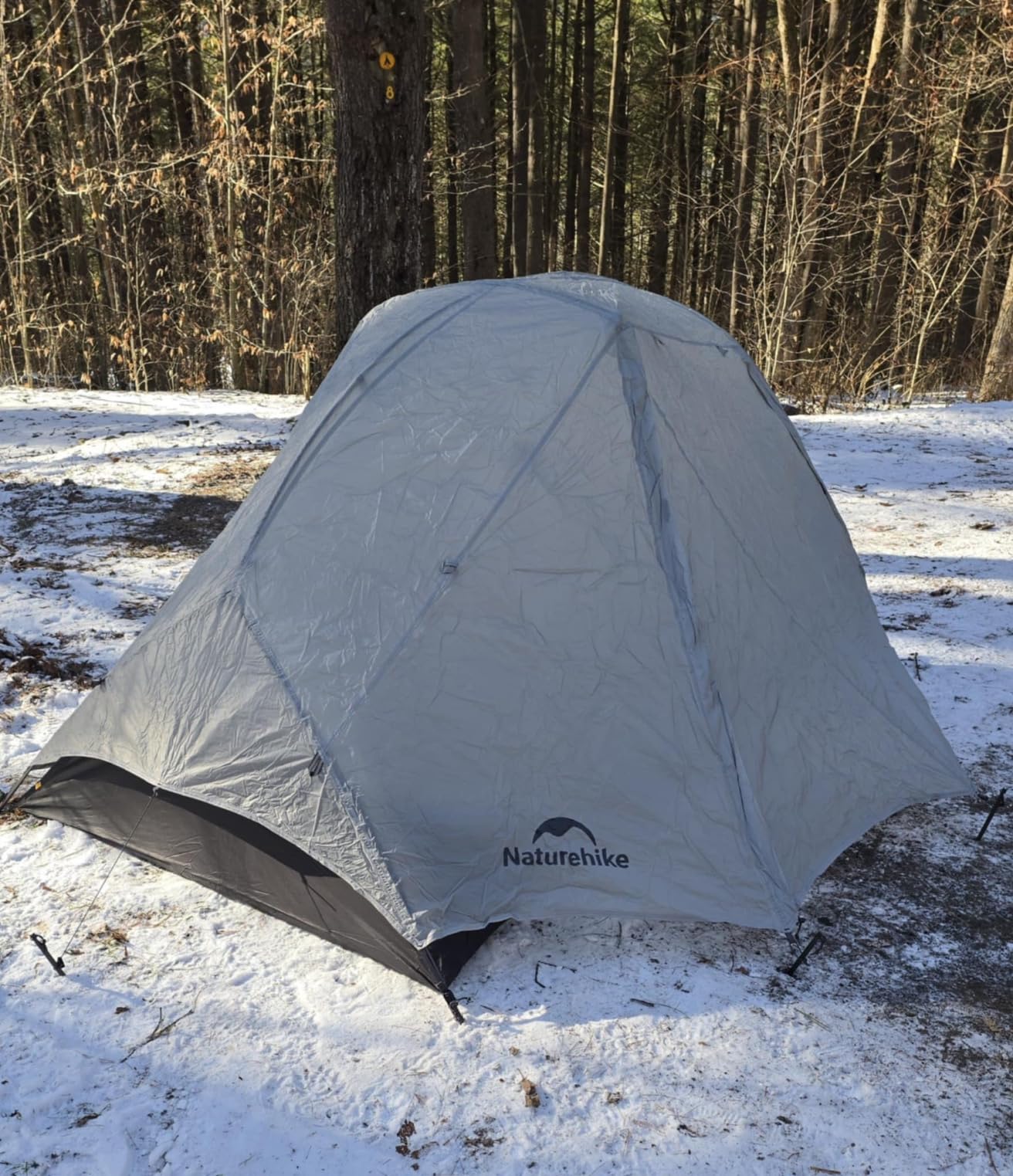
4
Night Cat Ultralight Tent
Best Waterproofing. We tested the Night Cat Ultralight Tent on a solo overnight trip I did for some SAR (Search and Rescue) field training. I needed something compact, waterproof, and fast to deploy—and it checked all the boxes.
This is a true minimalist’s tent. It’s a one-person bivy-style design, but surprisingly cozy once you crawl in. The waterproof nylon held up against thunderstorms that rolled in after dark—no leaks, no puddles. I had pre-treated the seams with extra waterproofing, just in case, but honestly, it might not have needed it.
Setup was super simple—just a few stakes and ropes, and you’re good. I used my trekking poles for support, which meant I didn’t have to carry extra tent poles, freeing up space in my pack. For backpackers who prioritize weight savings and need a reliable 4-season option in emergencies or minimalist adventures, this one delivers.
No condensation issues either, which was a pleasant surprise given how humid it got after the rain. For solo missions, fastpacking, or SAR duty, this one has earned a permanent spot in my loadout.
Feel free to browse the Best Waterproof Tents for Camping In Rainy Conditions!
Pros:
✅ Exceptionally lightweight for solo hiking
✅ Waterproof and windproof design
✅ Quick and simple to set up solo
Cons:
❌ Tight fit for taller or larger campers
3
MC TOMOUNT Tent
We pitched the MC TOMOUNT Tent during a shoulder-season trip to the Smokies, and it became our little slice of comfort amidst some seriously moody mountain weather. Right out of the bag, the setup was intuitive—it’s one of those tents that just makes sense the first time you unfold it. I didn’t even crack open the instruction sheet. Ten minutes later—with time to spare for a few photos—we were all set up and sipping cocoa by the fire.
Inside, it felt surprisingly roomy. The 86.6″ x 55.1″ footprint gave us plenty of side-by-side space, but the real winner? That center section that expands to over 102 inches wide. It gave us a dry, covered area up front to keep our packs and muddy boots. No need to cuddle with your gear all night long.
The 20D nylon with silicone waterproof coating held up brilliantly in persistent rain. We stayed bone-dry. I still wouldn’t skip a tarp or footprint, though—the tent floor is on the thinner side, and with seams near ground level, we didn’t want to take chances.
Ventilation-wise, it’s a breath of fresh air. Two side vents and a double-layered design with B3 mesh meant we didn’t wake up in a steamy sweat or with condensation dripping down the walls. It’s got a sweet little gear loft, handy pockets on both ends, and a ceiling hook for lights. Just enough small comforts to make it feel homey without the extra bulk.
For backpackers who want space without sacrificing packability, the TOMOUNT nylon beach tent checks all the right boxes—just remember to pack a groundsheet.
Pros:
✅ Spacious with expandable front area
✅ Excellent ventilation and airflow
✅ Lightweight yet sturdy aluminum poles
Cons:
❌ Floor fabric is thin—needs a groundsheet
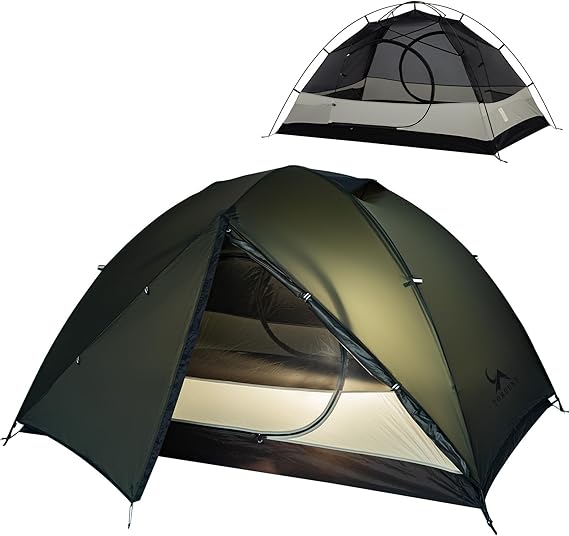
2
BISINNA Backpacking Tent
I’ll be honest: I was skeptical when I first saw the BISINNA Backpacking Tent. A tent under $100 with features you’d normally see in a premium model? Sounded too good to be true. But a weekend along the Pacific Crest Trail in mid-autumn proved otherwise—this thing is legit.
Let’s start with the build. The rainfly uses 20D anti-tear nylon with a PU3000mm coating, which shrugged off a night of steady rain like it was nothing. Even the bottom held up, thanks to that 210T polyester—thicker and tougher than most in this price range. Zippers? Shockingly good. Smooth, durable, and clearly designed to last. I’ve had tents double the price with flimsier components.
Setup took about 20 minutes the first time—there’s a unique pole design that forms a big Y-shape with a pivoting crossbar. It’s a little quirky at first, but once you get the hang of it, it’s solid and symmetrical. Dual doors and matching vestibules on both long sides made getting in and out a breeze, especially on those 2 a.m. nature calls.
Ventilation was outstanding. Closeable vents on either end and a 2- to 4-inch gap between the inner tent and fly kept airflow moving, even when everything outside was damp and chilly. No condensation at all. The freestanding design meant we could pitch it on rocky terrain without hassle, and the included footprint was the cherry on top—perfect fit, and saved us from dragging extra gear to protect the bottom.
If you’re starting out or just want a tough, well-built waterproof nylon tent that punches way above its weight, the BISINNA should be at the top of your list.
Pros:
✅ High-end components at a budget price
✅ Great ventilation and two large doors
✅ Includes fitted footprint and solid rain protection
Cons:
❌ Initial setup can be tricky due to unique pole layout
1
Wakeman Camping Tent
Best Overall. Sometimes, it’s the simplest setups that win your heart. That’s exactly what happened with the Wakeman Camping Tent. It came along on what was supposed to be a casual backyard sleepover but ended up handling three days of wind, rain, and some serious weather like a pro.
This dome-style tent is lightweight, basic, and surprisingly durable. It’s got fiberglass poles (not my favorite, but they held up), and a D-shaped door that makes getting in and out a whole lot easier than I expected. The first time setting it up took a bit of fiddling—maybe 45 minutes? But by the second go, I had it pitched in 10 flat.
If you’re camping solo, it’s perfect. With the mattress pushed to one side, there’s space for a couple of bags, shoes, and a lantern. There’s even a small ventilation window that helped keep the air from getting stuffy.
What impressed me most? Despite setting it up under trees, directly on dirt, with insects crawling around outside, not a single bug made it in. No drafts, no water leakage—even through some pretty gnarly rain. One night I left a sugary drink open, and not a single ant or fly wandered in. That’s wild.
Is it the roomiest tent out there? Nope. But for new campers, budget-conscious adventurers, or folks just dipping their toes into the outdoor lifestyle, this thing is a hidden gem. I slept better in this tent than I did in some hotel rooms. It’s a warm, dry, snug little shelter that punches well above its weight—and its price tag.
Pros:
✅ Very affordable and beginner-friendly
✅ Holds up well in rain and wind
✅ Compact and lightweight for travel
Cons:
❌ Snug interior—best for solo use or light gear only
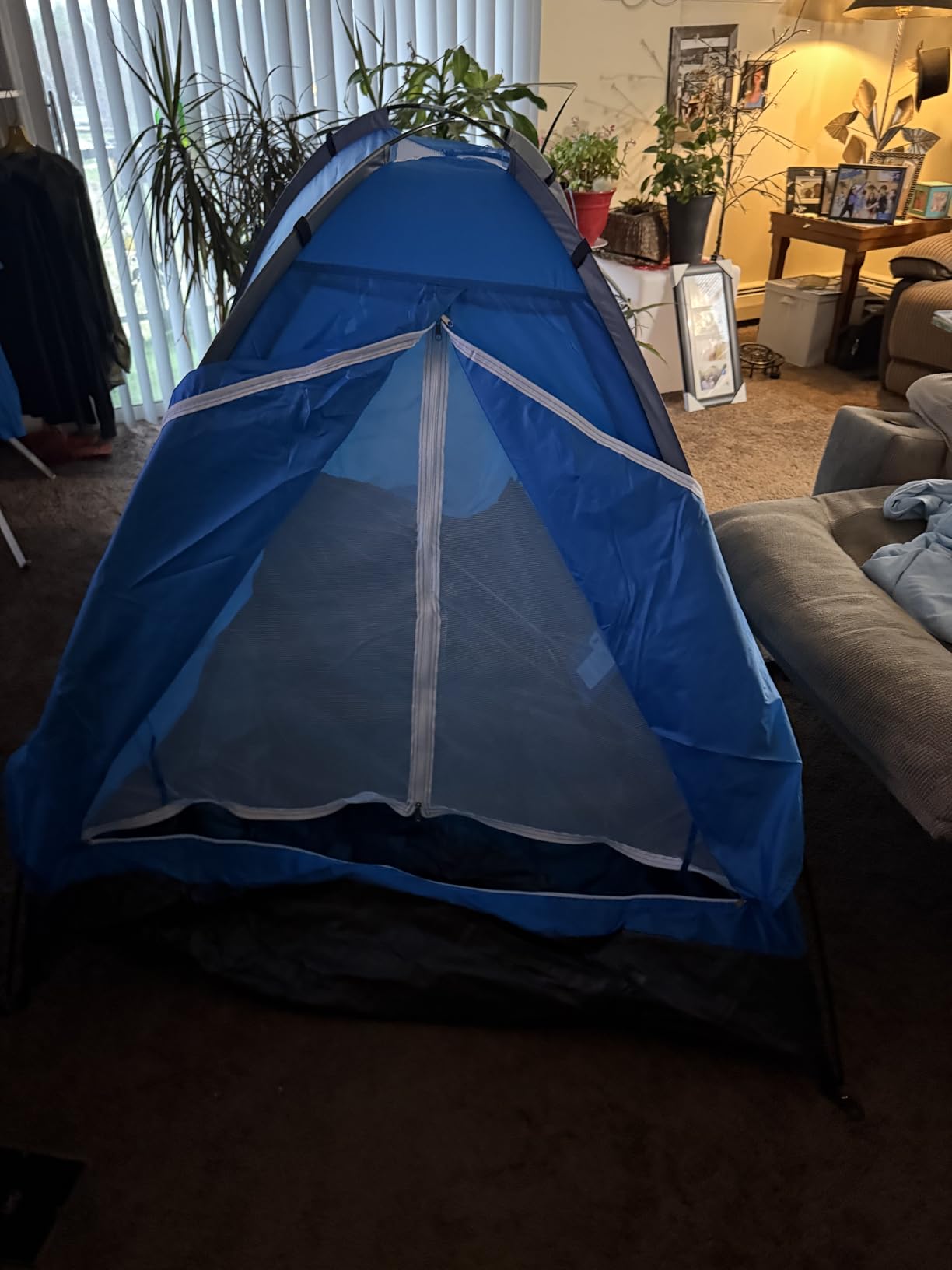
Our Verdict!
From the above round of the top nylon tents, we chose the Wakeman Camping Tent as the Best Overall option because of its high-level functionality, value for money, and versatility. Moreover, we have set aside two other top options based on a specific feature for each. See below!
- Best Waterproofing: Night Cat Ultralight Tent
- Best Stability: MSR Hubba Backpacking Tent
How to Choose the Best Nylon Tents for Camping
When it comes to nylon camping tents, nylon is a top choice for adventurers who want durability without the weight. Nylon tents are known for their strength, flexibility, and ability to resist wear and tear, making them perfect for both backpackers and car campers. But not all nylon tents are created equal. Choosing the best one comes down to understanding how nylon performs in different conditions and how well the tent is constructed for your type of adventure.
Here are three key features to look for when choosing a nylon camping tent:
1. Ripstop Nylon Construction
Nylon by itself isn’t waterproof, so it needs a coating. Tents treated with polyurethane (PU) are common and affordable, while silicone-coated nylon (silnylon) offers better water resistance, improved UV protection, and longer lifespan. If you’re expecting wet conditions, go for high-denier silnylon.
3. Weight-to-Strength Ratio
One of nylon’s biggest advantages is its excellent strength-to-weight ratio. Ultralight nylon tents are perfect for backpacking, but be mindful of the denier rating (fabric thickness). A higher denier tent (like 40D or 70D) will be more durable, while a lower one (15D or 20D) is lighter but more fragile.
2. Waterproof Coating (PU or Silicone)
Nylon by itself isn’t waterproof, so it needs a coating. Nylon camping tents treated with polyurethane (PU) are common and affordable, while silicone-coated nylon (silnylon) offers better water resistance, improved UV protection, and longer lifespan. If you’re expecting wet conditions, go for high-denier silnylon.
Is nylon good for tents?
Yes, nylon is an excellent material for tents, especially for backpackers and lightweight campers. It’s strong, flexible, and has a high strength-to-weight ratio, which means it can handle rough use without weighing you down. Nylon also packs down small, dries quickly, and resists abrasions better than many other fabrics. When coated with PU or silicone, it becomes highly water-resistant, making it ideal for wet conditions. Overall, nylon tents are a top choice for those who need durable performance without bulk.
How to waterproof a nylon tent?
To waterproof a nylon tent, start by cleaning it thoroughly with mild soap and water, then let it dry completely. Apply a waterproofing spray specifically designed for nylon or synthetic fabrics—Silicone or PU-based sprays work best depending on your tent’s original coating. Spray evenly on the rainfly and tent body, focusing on areas exposed to heavy rain. Next, reseal the seams using a seam sealer compatible with your tent’s coating. Let everything cure for 24 hours in a dry, shaded area. This process refreshes the water resistance and extends your tent’s life in wet conditions.
How do you heat a nylon tent?
To heat a nylon tent safely, use insulated sleeping gear like a high-rated sleeping bag and sleeping pad to retain body warmth. For extra warmth, you can use a portable, tent-safe propane or electric heater — just make sure it has safety features like auto shut-off and proper ventilation to prevent carbon monoxide buildup. Wearing thermal layers, using a mylar blanket inside the tent, and placing a hot water bottle in your sleeping bag are also effective. Never use open flames or stoves inside a nylon tent, as nylon is highly flammable.
